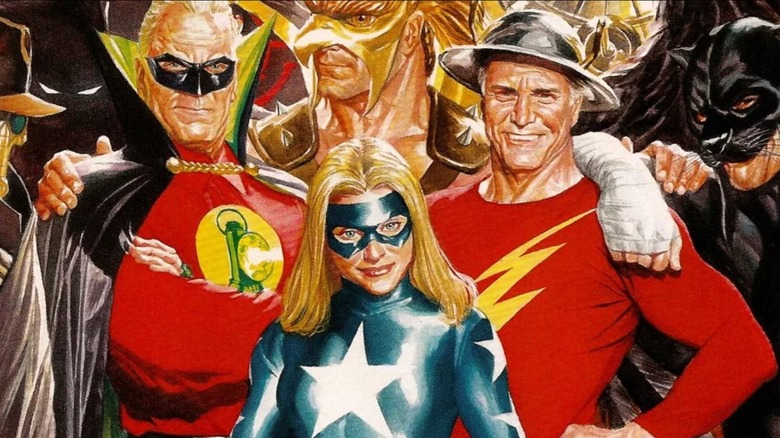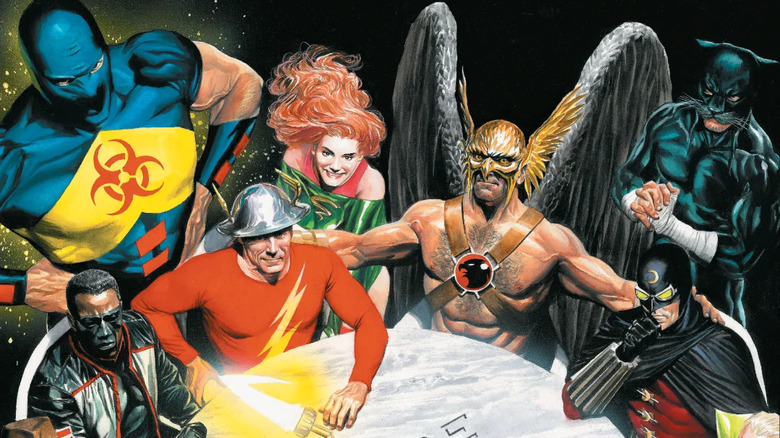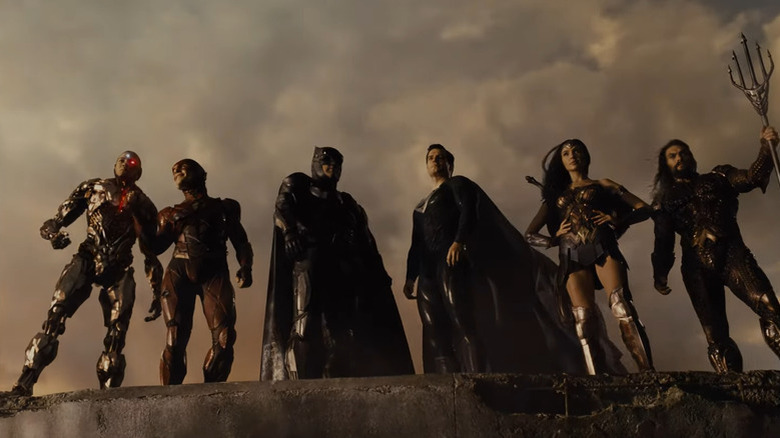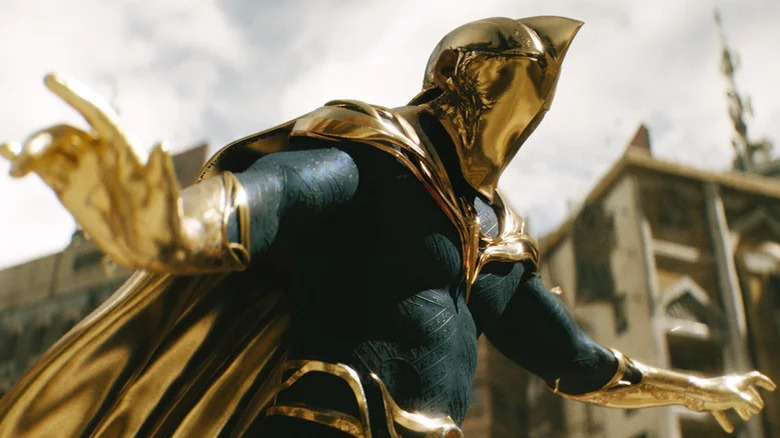Justice Society Vs Justice League: How Are They Different & Who Is Stronger?
Most every comic book and superhero movie fan knows the Justice League, DC's flagship super-team that combines the powers and abilities of some of the company's most powerful heroes. However, if you're only cursorily familiar with DC Comics, you might not know that it's far from the only powerful justice-themed super-team running around. There's also the Justice Society of America, a group that features some pretty powerful players and familiar names, but nevertheless differs quite a bit from the standard Justice League lineup.
Though the Justice League is the more prominent super-team, various versions of the Justice Society have appeared on the small screen over the years. The team was also a major part of the 2021 movie "Black Adam," although there were many differences between the comics version and the live-action one.
With the constantly increasing prominence of the Justice Society, it's worth looking deeper into the team. Here's precisely what makes the Justice Society such a powerhouse — and whether they're stronger than the Justice League.
Who are the Justice Society in DC Comics?
The untold truth of the Justice Society of America is as muddy as you'd expect from a superhero team that got its start way back in 1940. This makes it the far older team of the two, seeing as the Justice League made its first appearance in 1960, and the age difference eventually came to define the two teams. As the Justice League became the more popular group, the Justice Society was relegated to the sidelines. But they eventually became a super-squad that's either the Justice League's predecessor or its equivalent from another Earth, with a central lineup that shares similarities with the League but also has plenty of unique team members.
The Justice Society has counted among its ranks heroes such as the Alan Scott version of the Green Lantern, the Jay Garrick version of the Flash, the magician Doctor Fate and many other powerful beings — including God's wrath made manifest, the Spectre. Arguably the best-known incarnation of the group exists in the New Earth DC continuum, where the Society is specifically a WWII-era predecessor of the League and the other super-teams, which eventually becomes a sort of mentor organization to the younger superhero groups.
The Justice League are still DC's most famous superhero team
Superman (Henry Cavill). Batman (Ben Affleck). Wonder Woman (Gal Gadot). The Flash (Ezra Miller). Aquaman (Jason Momoa). Cyborg (Ray Fisher). Such is the makeup of Zach Snyder's Justice League, but in the comics, the group is even stronger. Folks like Superman and The Flash alone might be story-breakingly powerful, but when you add in the rest of the movie team — not to mention the scores of comic Justice League affiliates like founding members Green Lantern and Martian Manhunter — they're mighty enough to take on just about anyone.
This is, of course, by design, since the team is essentially meant to highlight Earth's most capable heroes. The Justice League is more or less the "Who's Who" collection of DC's mightiest good guys, which gives them a special place in this particular comic book universe — and makes the Justice League the obvious first port of call for big-budget cinematic adaptations.
The Justice Society vs The Justice League: Which team is more powerful?
Both the Justice Society and the Justice League have plenty of heavy hitters when it comes to sheer power. Still, while both groups feature some of the most powerful DC heroes, the spearhead of the teams' attacks is a bit different.
The League has an abundance of traditionally powerful heroes like Superman, Wonder Woman, and possibly Shazam to go along with more peculiar power sets like the Flash's speedster antics, Green Lantern's energy constructions, and Batman's intellect and uncanny ability to consistently survive encounters with beings that are far more powerful. However, depending on the version of the Society in question, the older team has been known to feature a counterpart for pretty much every Justice League member, and then some. What's more, Society affiliates like Doctor Fate and Spectre bring in a mystical element that the League might not necessarily have an answer for — especially when it comes to the Spectre, whose powers are borderline limitless. Knowing this magical advantage, it's tempting to give the power edge to the Society, especially knowing that Justice League MVP Superman is weak to magic.
That being said, any battle between two comic book supergroups depends heavily on the lineup and, let's face it, on who the writer wants to win. With that in mind, it can be safely stated that the power balance between the two teams is too close to call.



